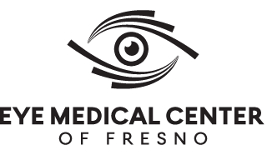How many types of Glaucoma are there and which type do I have?
There are many types of glaucoma: narrow angle glaucoma, open angle glaucoma, neovascular glaucoma, inflammatory glaucoma, and other secondary types. In all cases, either the eye pressure is too high or the optic nerve is too sensitive to the eye pressure; in either case the treatment is to lower eye pressure. The most common type is open angle, where treatment starts with eye drops that can lower ocular pressure and may later require glaucoma laser or glaucoma surgery. Narrow angle glaucoma treatment is usually preventative by a laser through the iris to creat an additional opening. The eye is constantly producing fluid pressure and a healthy drainage system is necessary to prevent high pressure from developing. Neovascular glaucoma can occur in diabetes and other vascular problems by producing blood vessels that block this drainage system and usually requires laser or injections to stop the growth of blood vessels. Our glaucoma specialists will tell you what type of glaucoma you have and how to treat it
How is Glaucoma Diagnosed?
Diagnosing glaucoma is a complex process and is not a black and white situation, meaning that at times multiple tests over time have to be performed on a “glaucoma suspect” before a definitive diagnosis can be made. This is because in a “suspect” either the optic nerve looks slightly damaged or the eye pressure is only slightly elevated, and a clear diagnosis can’t be made until there is documented loss of nerve fibers either by imagining with OCT or by visual field defects. As such, your glaucoma specialist may repeat both OCT imaging of the nerve and/or request visual field testing several times a year. So while checking pressure and treating high pressure is important, testing to establish the degree of damage is equally important, and you should feel comfortable to ask your doctor what the testing is showing.
What is Normal Eye Pressure?
Generally normal eye pressure is considered to be 21 or less, but two other factors must be determined before your glaucoma specialist can tell you if your eye pressure is ‘normal’ or ‘high’ for you personally. Some nerves may be more sensitive to eye pressure and already damaged and thus a lower than the normal 21 level is recommended to prevent vision loss. In addition, the thickness of the cornea can affect eye pressure reading and so a thicker cornea can falsely show a higher pressure and reversely a thinner cornea can show a lower pressure than really is found inside the eye. As a result, most glaucoma specialists set a “target pressure” for you, and you can ask your doctor to share this information with you.
Are there Side Effects to Glaucoma Eye Drops?
Yes, as with oral medications, there can be side effects to medicated eye drops in some people. Some drops may make the eye look slightly more red (eg. Prostoglandin class), and these can also make the lashes grow longer or increase pigmentation of the eyelid & iris. Drops in any of the classes of can irritate the eye or cause allergic reactions, and as a result your glaucoma specialist may have to change your drops or switch to ones without preservative. Preservative free glaucoma drops are becoming more common and more insurance carriers are beginning to cover for these drops. If you are having a severe reaction to an eye drop or not tolerating it, please tell your doctor and don’t simply pretend that you are using when you are not, because he/she can always try an alternative drop or even proceed to laser treatment.
What types of Glaucoma Laser & Surgery are there?
Many different types of glaucoma laser exist depending on your needs; some of these are Argon Laser Trabeculoplasty (ALT), Selective Laser Trabeculoplasty (SLT), Laser Peripheral Iridotomy (LPI), and Cyclophotocoaggulation (external or ECP). Glaucoma surgery consists of creating a secondary passage for the flow of fluid out of the eye and some of these are Trabeculectomy, Glaucoma Tube Shuts such as Ahmed or Baerveldt Valve, the smaller Xpress Shunt, and newer technques of increasing flow like Canaloplasty. Laser treatment or surgery is chosen based on your type and degree of glaucoma.
Can Cataract Surgery Reduce Eye Pressure?
Yes, cataract surgery alone has been shown in many cases to lower the pressure by a couple of digits, but may not be enough or even effective in cerrain cases. This can especially be true in cases of narrow angle glaucoma, where the drainage system of the eye is being pushed close and removing the thicker catarctous lens can create better drainage. Your glaucoma specialist can tell you if cataract surgery can help you.
